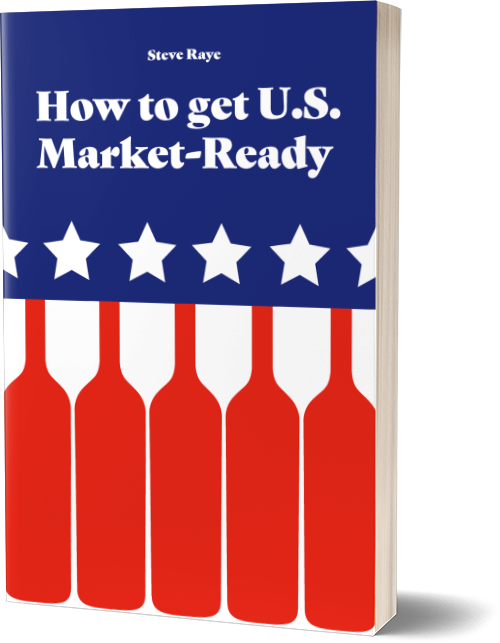There’s more than one way to skin a cat
OK, so I found a solution to the “Yahoo Problem” by deductive reasoning supported by trial and error….meaning I kept writing ad variations to see what got through the screen. Turns out the words that were a problem were related to “buy XXX online”. They must have had an algorithm that flagged the word absinthe. All the other ads I wrote were accepted. Now I have to get creative…how can I say buy absinthe online without saying absinthe? Stay tuned for solutions.
It’s Not Fair!
I had set up a Yahoo! Search Marketing ad campaign for Absinthe Mata Hari (to run the text ads you see on the top and right rail of search query results)…and they “declined” to run the ads. Their rationale was that the product was of questionable legality. After two attempts to get them to revisit the issue, their final judgement was not to accept the ads. As many of you know, Google has a flat-out policy not to accept ads for beer or spirits, but Yahoo’s policy is quite a bit looser. I guess we just found out where the line is.
Article on Distributor Consolidation in The Drinks Business
2 Strip Clubs, a Biker Bar and a Pizza Joint
Lessons learned from selling on the street
I’ve been in Atlanta working with our distributor Georgia Crown on a sales blitz/kickoff Oval Vodka and Absinthe Mata Hari.
Key learning 1: the pushback from on and off premise retailers we’re hearing about the flood of new products, particularly vodkas, just isn’t very significant. Sure, the first response you can expect is “Oh, no, not another Vodka.” But when you start asking questions, we found that the reality is retailers very clearly recognize the importance of the category, the interest consumers in new items, and the need to carry new items to respond to those consumer needs and interests. And when it comes to new categories like Absinthe, the interest is very high.
So even in a “down” economy the market is still open and vibrant, albeit a little more cautious and conservative on inventory investments. So I guess the lesson I’m learning this week is get out of the office onto the street and see for yourself what’s happening out there and where the opportunities are. Don’t let the gloom and doom purveyers in the media determine your perception of what’s really going on. We may be in a recession and consumers certainly are changing their drinking habits. But there is always room for new brands and programs. Keep in mind that what makes the difference for them is not your brands, but how your brands can help them grow their revenues and profits.
Scientific American article on magnifying taste
For those who are really into Darcy’s presentation on sensory perception at TOTC (which he’s now posted on his site), here’s the link to the SA article (August 08 issue) on taste: http://www.sciam.com/article.cfm?id=magnifying-taste
E-Commerce Learnings and Solutions
One of the disciplines BAT has been developing expertise in is e-commerce. But first a bit of background. I’ve been involved in bev alc e-commerce since 2000 with a couple of startups including Drinks.com and eWinesource.com. Neither of them made it commercially, but I learned a lot about the who, what, when, where and most importantly HOW to make it work.
Like a lot of initiatives on the internet, e-commerce for spirits, wine and beer is a work in progress with the added complications of the U.S. regulatory environment where we’re dealing with 50 different states each with their own laws. (and multiply 50 by the often three different sets of regulations applying to spirits, wine and beer!) So the big quasi-national e-commerce players are still figuring out how to monetise the concept. That means there’s a window of opportunity right now to run in the slipstream of those who are making it work and provide value to them rather than building a new solution on your own (Note to wine.com…VC money and advertising dollars are not the answer, margin on sales is.)
So our strategy for clients is a simple one…be smart…find solutions that are out there that other people are developing, and find ways to work with them. We have two solutions that are working quite well for us.
Both are predicated on the idea of understanding what drives the economy of the web, and the needs of prospective partners. By trading things of high perceived value that don’t necessarily cost a lot of cash you can both win.
The “currency” of the web is traffic and links…it’s equivalent in the retail world to a great store location on a busy street. Retailers want customers in the store. Suppliers on the other hand need two equally critical things , which in the real world are for retailers to stock their products (shelf facings) and floor displays (“if it ain’t on the floor, it ain’t in the store”!)
Our office e-comm guru, Anthony King, is spearheading our program which generated a home page ad (think 10 case floor display as you walk into the virtual store) at one of the largest internet retailers in the Northeast, Shoppers Vineyard for our client Absinthe Mata Hari. 
I’ll be talking more about this at our upcoming U.S. Drinks Conference in London in Oct. but stay tuned here for more insights in the weeks to come.
TOTC Day 3 the importance of vodka
I attended the “Rediscovering the Traditions of vodka” led by Steve Olsen and learned a great lesson on how to engage an audience. Throughout the whole TOTC event, Vodka was criticized, belittled, vilified, marginalized and ultimately disrespected. It’s like the old Yogi Berra line…”nobody goes there anymore, it’s too crowded.”
But with 28% share of the total US spirits market, Steve eloquently made his points that it warrants respect and consideration and can’t and shouldn’t be ignored. He went on to walk us through a product tasting that was more about sensing the vodka as opposed to tasting it. Darcy O’Neil made the point in the sensory perception session that if you analyze vodka chemically, there aren’t any flavor compounds in there… no citrus, no wheat, no potato and certainly no tobacco, peanuts or any other contrived descriptors. What there are however are components that might trigger a flavor memory or association. And that’s what we’re really sensing, e.g. not citrus per se, but a compound similar to citric acid that sparks an association in your mind.
Steve demonstrated a tasting protocol where you can separate the liquid flavor components from the aromatics. By coating the oral cavity with the vodka, then closing your mouth and breathing out your nose, you can segment the feel of the alcohol from the smell of the volatile compounds. Then breathe in only through your mouth to gauge the quality of the alcohol…it should feel cool like menthol or eucalyptus, not harsh or burning. He went on to demonstrate the difference between a number of brands and show how they not only differed, but had specific characteristics that would make a given vodka the preferable spirit for a given cocktail.
At the end of the session, he had turned a roomful of skeptics into advocates.
TOTC Day 3 Working with Bloggers
Saturday was a day of blogger immersion. We had breakfast at Brennan’s with Darcy O’Neil. Lunch at Bourbon St. with Gabriel Szaszko and his lovely wife Joanna, then dinner at Arnaud’s with Jeff Morgenthaler and Jay Hepburn. Our objective was to get first hand input on how suppliers can work with bloggers…what their needs and interests are. Basically all gave the same answer…acknowledgement and respect. So many suppliers take the wrong tack in working with bloggers…mass mailings with samples of product supported with a lecture on how wonderful the brand is.
These guys (these guys?!….us!…I’m a blogger too!) undestand the commercial needs of business and want to write about brands. But just like old world journalists they expect brand and PR folks to do their homework. Read the blog to get an understanding of the interests and bias of the author. Participate in the conversation on an ongoing basis with comments, reciprocal links, and contributions that add value…not just talk about a brand. It’s not a one night stand, it’s a conversation.
Darcy’s all about metrics…he’s a chemist at heart and at work and while he acknowledges how widely read his blog is, he’s really interested in just the facts. Gabriel’s a journalist. Like me he keeps Strunk and White at the ready, appreciates it when people write in complete sentences and take the time to at least run spell check before asking for a favor. Jay’s a brit that has signficant virtual presence in the U.S. but a very limited physical one. Just getting samples is a challenge. And Jeff? Well, Jeff’s unique. When I asked what his needs are and ran down a long list of things we could do for him, his answer was “yes”.
TOTC Sensory Perception
Great presentation by Darcy O’Neil on sensory perception. I remember a lot of this from college, but clearly there have been advances in knowledge in the past 30 years. The fun part of the event was the taster evaluation. People fall into three categories: non-taster, normal, and super taster. All refer to the ability/senstitivity to taste bitterness. There is a chemical test strip we were handed to put on your tongue that made it pretty clear what category you fit in. The key point though is if you’re a bartender, chef or someone whose palate is a judge for others…you have to know where your perceptions are before preparing for others. E.g. a super taster is very sensitive to bitters so would make a very different tasting Negroni than a non-taster.







